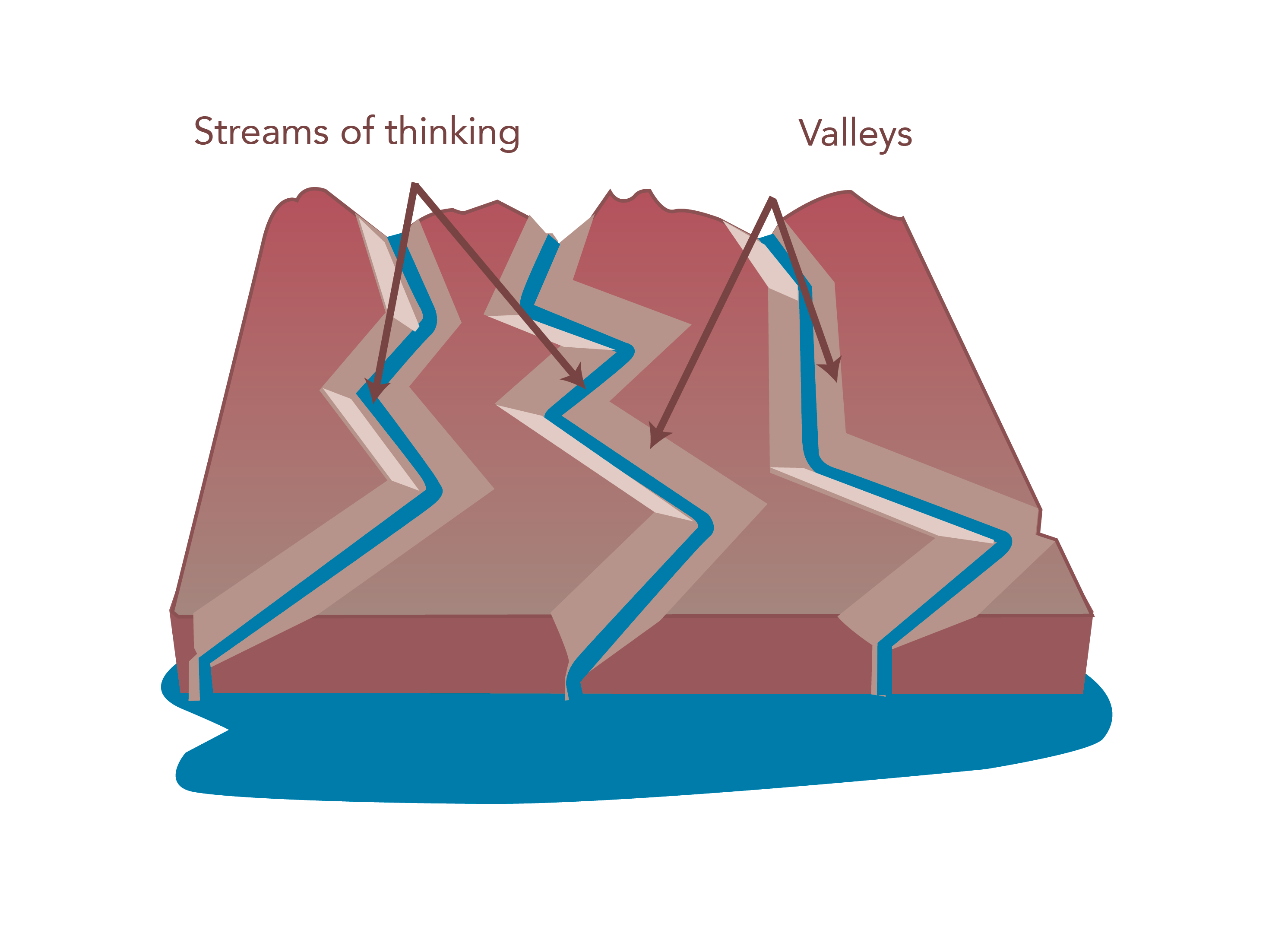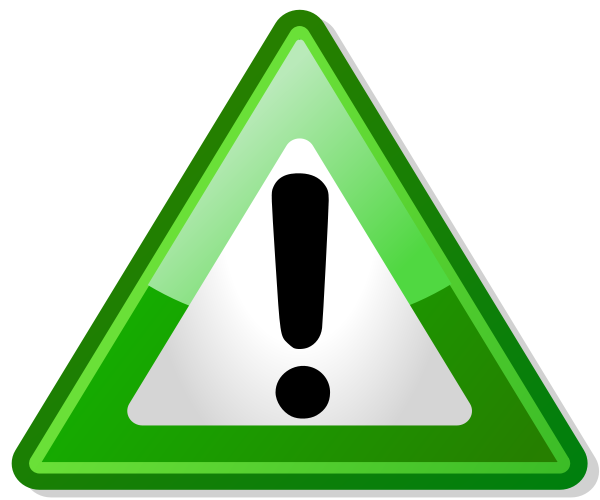MI2 University
MenuThinking Differently 101: Basic Concepts
Defining creativity
Creativity is the connecting and rearranging of knowledge–in the minds of people who will allow themselves to think flexibly–to generate new, often surprising ideas that others judge to be useful.
This definition is a composite of concepts from the creativity literature and describes the 3 Ps of creativity:
- Product of creativity - New, surprising, useful ideas
- Process of creativity - Connecting and rearranging knowledge, e.g., the Apple iPod was a collection of existing technologies
- Personality of the creative person - Flexible thinker
YOU are an innovator
Many incorrectly assume that creative thinking–the ability to think differently–is a special gift, bestowed on only a few. While it is true that we rarely see the extraordinary creativity of an Edison or Einstein, modern findings from the fields of the cognitive sciences indicate that the ability to generate innovative ideas for change in our work is a common capability that we all possess. Most of us just need a little help engaging that capability.
Natural thinking as mental valleys
To understand how to think differently, it is important to understand first how thought proceeds normally.
The mind processes language by activating patterns of neurons that unfold a word into a rich set of images and concepts based on past learning. This is illustrated by Edward de Bono's mental-valleys model of the mind. Just as randomly falling rain gets organized into streams at the bottom of valleys through years of erosion, so the mind learns to organize the otherwise random sounds of a spoken word into an associated stream of thought.

This flexible, pattern-matching mechanism is essential in daily life. Not only does it help us engage in conversation, it also enables a good diagnostician to quickly zero in on a problem based on an initial review of the situation. The diagnostician has seen the pattern before and, therefore, has a good idea of the underlying explanation. The mental mechanism is the same whether we are preparing a budget, running a department or just trying to get out of bed in the morning. We use the past experiences stored in our memory as a guide for how to proceed.
Thus, when one thinks of a provider's office he or she immediately thinks of a physical location, with a receptionist and waiting area, where the medical assistant calls you back into an exam room before you see the provider, and so on. This thinking process occurs with minimal conscious effort and gives rise to the fact that most ambulatory care sites, and their processes, are quite similar.
Thinking differently involves mental valley exploration
Thinking differently occurs when we deliberately rise out of the usual mental valley to explore other possibilities. A video consult with a healthcare provider over the Internet is an innovative idea because it lies outside the current mental valley of "going to see the doctor." However, the mental valley of the Internet includes the concept of a distant video connection as a very natural thing to think about. Creative thinking involves connecting the information in these two mental valleys. The connection can be made either purposefully or randomly.

The terms mental model, assumption, paradigm, rule, tradition, the way we do things and so on are roughly equivalent to what de Bono calls a mental valley. The point is to rise out of it and explore other possibilities.
Thinking differently requires attention, escape and movement
The process of rising out of and exploring other mental valleys in order to come up with new and useful ideas relies on three deliberate mental activities–attention, escape and movement. Anyone can do it! No specific "genius" is required, only thoughtful and deliberate effort.

Attention
We must pay attention to our mental valleys, assumptions and traditions, and not allow our thoughts to simply rush forward in the usual way.

Escape
We must be willing to challenge these and escape, even if only for a few moments in our mind, in order to wonder "what if...?"

Movement
We must also overcome the self censoring that would draw us back into comfortable patterns of thought and, instead, move in thinking to create a brainstormed list of ideas and possibilities that arise out of attention and escape.
These three principles, in some sequence and relative emphasis, are the essence of thinking differently and can be recognized as lying behind all methods for creative thinking.
Seven types of change
The range of what might constitute a new and useful
idea, coupled with the endless possibilities that arise out of attention,
escape and movement, leads to the observation that the degree of creativity of
a given idea lies along a gradient.
Rolf Smith's seven types of change:
- Doing the right things
- Effectiveness, focus and working to priorities
- Doing things right
- Efficiency, standards and variation reduction
- Doing things better
- Improving, thinking logically about what we are doing and listening to suggestions
- Doing away with things
- Cutting, asking "why do we do this?," simplifying and stopping what really doesn't matter
- Cutting, asking "why do we do this?," simplifying and stopping what really doesn't matter
- Doing things that others are doing
Observing, copying and seeking out best practice
-
Doing things no one else is doing
Being really different, combining existing concepts and asking "why not?" -
Doing things that cannot be done
Doing what is commonly thought to be impossible, questioning basic assumptions, breaking the rules and being a bit crazy
This model can be used to reflect on the output from idea generation or to deliberately focus a session to stimulate certain classes of ideas.
Improvement, innovation, impact and scale
The seven types of change span the spectrum from simple logic to high creativity. As such, they help clarify the difference between improvement and innovation.
- The first four types of change–Doing the right things, Doing things right, Doing things better and Doing away with things–require logical thinking. We generally consider these changes to be "improvement," but typically not "innovation."
- The last two types–Doing things no one else is doing and Doing things that cannot be done–require creative thinking. In order to achieve them, we must connect and rearrange what we know to generate new, surprising and useful ideas. This is what we typically think of as "innovation."
- Type 5–Doing things that others are doing–can go either way. It is a logical "improvement" when we replicate best practices from within our own industry. It is a creative "innovation" when we rise out of the mental valleys of our industry and adapt concepts from other fields.
The bottom line is whether it's improvement or innovation, if it's better, it's good. There is not a sharp distinction. Let's not get into long debates about it.
Note that the seven changes typology does not address the impact of the change. Both logical and creative changes can have either small or substantial impact. We generally think of "innovation" as being a creative change that has a substantial impact.
Finally, note that the typology also does not address the scale of a change. An innovation might only affect a task or two in one area–small innovation, lower-case "i" innovation, or minnovation are terms sometimes used for this scale of innovation. Or, the change might impact an entire health system or the healthcare industry in general–some would call this big innovation, capital "I" innovation, or breakthrough innovation.
The point here is that, regardless of scale, a creative change that has a substantial impact on something is an innovation. YOU are an innovator when you think differently and do what you can in your work; whether it changes healthcare as a whole, or just your little corner of it.
Innovation funnel
Research reveals that innovation in an organization is not a linear process. It almost never happens that a team comes up with a single idea, their first test of it is perfect, and they seamlessly transition to successful full-scale implementation. Trying many new things, failing on most, but learning and adapting as you go along, is an essential part of the process.

This observation is summarized in what the literature refers to as the innovation funnel. The ratio of 100 brainstormed ideas to one successful new product or service highlights the importance of not restricting idea generation with premature judgment. At the same time, the narrowing of the funnel calls attention to the need for progressively applying judgment regarding investment of resources as the process moves along over time.
Divergent-convergent thinking cycle
In the 1950s, creativity author J. P. Guilford noted the importance of deliberately alternating between divergent and convergent thinking in the innovation process.
Divergent Thinking: Expanding the list of possibilities; purposefully looking for more, or looking at the issue from a variety of directions. Divergent thinking stresses quantity of thought, imagination, long lists, and many different ways. Divergent thinking is necessary in order to challenge "the way we have always done it." The downside of divergent thinking is that it can go on forever and we end up with lots of new ideas, but never actually do anything about them.
Convergent Thinking: Reducing the list of possibilities; purposefully looking to condense, summarize, focus or select. Convergent thinking stresses quality of thought, good judgment, short lists and a few selected ways. Convergent thinking is a necessary prerequisite to action, and without action ideas are not valuable. The downside of convergent thinking is that we might miss a possibility or prematurely discard one and end up being very focused on an idea that is not the best of the bunch.
Some people seem naturally full of ideas when faced with challenges and offer lots of alternatives (divergent thinkers), while others prefer to select a single idea and start to work on it immediately (convergent thinkers). But research shows that, regardless of preferences, cycling between both divergent and convergent thinking is more effective when we want to think differently.

As illustrated in the figure, we might start with a specific issue, but it is useful to spend some time looking at it from a variety of angles. This may bring a new perspective, which leads to a different statement of the issue and a reframing of our work. We might then generate lots of ideas, initially without judgment. But in the end we will need to apply some criteria to select those ideas that we wish to take forward. And so it continues, alternating cycles of divergent and convergent thinking that get the benefits of both, while avoiding the pitfalls of either.
Directed
creativity and innovation
The key concepts behind thinking differently support the notion that it can be a deliberate, organizational process that is directed toward specific ends. We can facilitate attention, escape and movement out of our existing mental valleys aimed at producing ideas for change on specific topics and organizational challenges. We can also systematically harvest and develop ideas along the pipeline illustrated by the innovation funnel.
Organizational innovation can therefore be simply described as: directed creativity implemented.